Business model canvas
What is a business model canvas
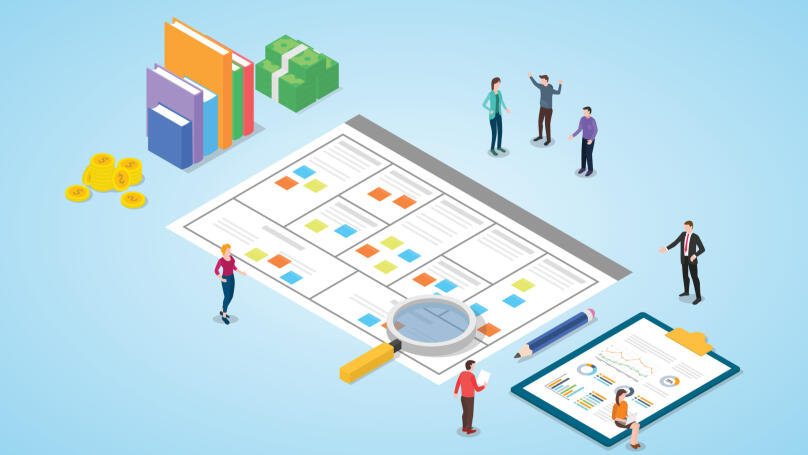
According to its official definition, a business model canvas is a strategic tool for managing new or existing companies developed by Swiss business theorist and announcer Alexander Osterwalder to structure how a business creates, delivers, and generates value for goods. Using the business model canvas or BMC for short, you can answer questions such as:
- Who is the key consumer of the product;
- What problems does the product solve;
- What is the uniqueness and value of the product;
- What budget is required for its implementation;
- How profit is generated.
Thus, the definition of this model implies a comprehensive analysis of various aspects of the business. Still, the model looks like a brief plan of one or two pages in practice. Today, many specialized books, for example, the book by Alexander Osterwalder and Yves Pigneur, "Business Model Generation: A Handbook for Visionaries, Game Changers, and Challengers," are devoted to it.
Business model canvas template
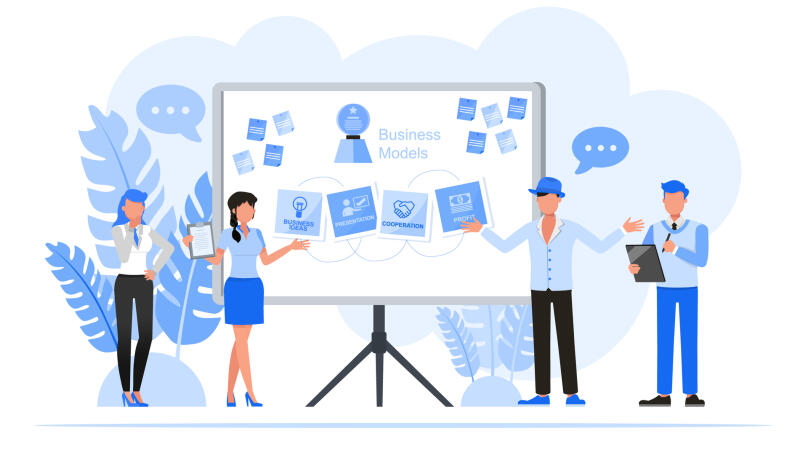
Canvas consists of nine blocks that are key business elements, inseparably linked to each other:
- Block #1. Key partnerships. List the main partners of your business who support the project's success. Also, indicate the benefits that a key partner brings you.
- Block #2. Main activities. Determine the main directions of activity of your business, which help sell goods and form the value proposition.
- Block #3. Key resources. Make a list of sources of tangible and intangible resources that your company uses to promote the product, its creation, sale, etc.
- Block #4. Value (key) proposals. Analyse all your business offers and highlight their distinctive advantage (what sets you apart from the competition).
- Block #5. Customer relations. Evaluate your relationship with your customers: how trusting and long-term they are, through what channels you interact with them, how good this interaction is, and whether the type and needs of the client affect it. Analyse if there is any feedback, post-sales support, etc.
- Block #6. Distribution channels. Break down each channel that allows customers to learn about your company and purchase your products.
- Block #7. Consumer segments. Describe the specific segments of your target audience, highlighting their key characteristics and differences. Then evaluate how different the promotion and sales strategies are for each segment.
- Block #8. Cost structure. Estimate the main expenses of your business, which are necessary for its operation and development. Also, try to draw parallels between these expenses and other items.
- Block #9. Sources of income. Determine what brings income to your business within the implementation of your proposals.
Next, we will take a look at each of these blocks in more detail. You can also read one of the specialized books for a better understanding of the topic, namely the book "Building Business Models."
A detailed analysis of Canvas elements and blocks
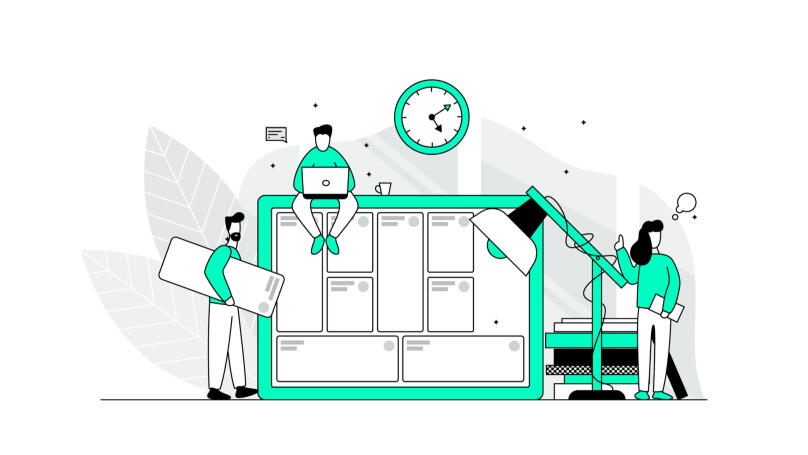
Key partners in business model canvas
The "Key partners" block describes a network of partners and suppliers who provide functional business operations. There are four types of partnerships: strategic partnership between non-competitors, strategic partnership between competitors, cooperation with suppliers, and a business alliance for developing joint ventures.
Answer the following questions to fill this block:
- How many key partners do you have?
- Which of them are the most significant for business?
- What benefits and advantages do these partnerships provide?
- What activities do they perform or help to perform?
Key activities in business model canvas
The main activities determine the company's real priorities, since this is what the business does every day and what the department managers focus on. This is a list of executive functions and business tasks that are being implemented.
As a rule, all types of business activities can be divided into five categories:
- Manufacturing is how a product is mass-produced, used in practice, and delivered to customers.
- Problem-solving means eliminating specific shortcomings of the current business models or problems that customers face when contacting the company and using the products. Usually, an activity of this kind has a project nature.
- Technology is the study, development, and implementation of technologies to develop the product and increase its value.
- Online includes creating and running a platform that will work to increase the company's competitiveness, as well as any other activity in the network. It provides excellent value and competitive advantage.
- Sales and marketing engages in promotion of the business and its representation in the market (again, including online).
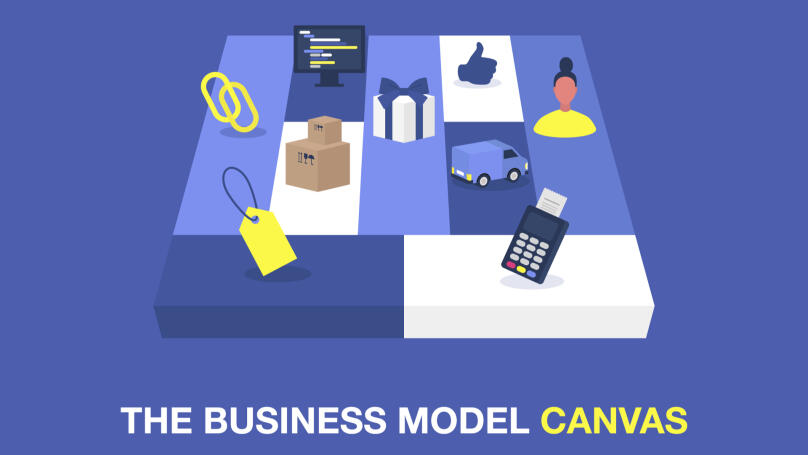
Key resources in business model canvas
Key resources are the essential assets which your business needs in order to thrive. Depending on the type and niche of your business, these resources may vary. Still, thanks to them, you can promote your value proposition, establish relationships with customers and, generally, be present in the market. Additionally, there are several types of resources: financial, physical, intellectual, and human. And they can belong to you (for example, your staff) and be rented from other companies (for example, an outsourcing company).
Questions that help describe each key resource:
- What resources are vital for the implementation of your proposal and the operation of the business?
- Which key resource brings the most results?
- What distribution channels do you use?
- Where do the resources for interacting with customers come from?
- What are your sources of income?
Value proposition in business model canvas
A value proposition is a set of products and services relevant to a particular segment of consumers. Your business exists through their development and sale. In simple terms, this is why customers turn to your company and choose you among competitors. That is why a value proposition must meet certain customer needs. However, it can also be innovative. That is, it can offer a unique, advanced solution to any problem. Furthermore, it can be adapted, meaning being an analogue of an already existing but improved product.
To fill in the "Value proposition" block, answer the following questions:
- What value do you have for customers?
- What issues do you help them solve?
- What needs do you meet?
- How exactly do your selling propositions sound?
- By what criterion are they grouped?
- Which segments are the propositions designed for? Why?
Business model canvas: customer relationships
Customer relationship is one of canvas's business model's most important building blocks. It refers to the different kinds of relationships that are established between you and your customers. They form the customer experience and, therefore, the reputation of your business in the market. The customer relationships are built based on the quality of the services you provide, including the professionalism of sales managers and the quality of post-sale customer service.
- To fill the "Customer relationship" template part, answer the following questions:
- How effective is your current relationship with your audience?
- With which segments do you try to maintain strong and long-term relationships?
- How successful are you in that?
- What methods do you use to achieve this?
- To what extent do customer relationships intersect with other blocks of your business model? What impact do they have on them?
Ideally, it should be one customer segment per one type of relationship. For each segment, you use a separate channel, and the relationship can be both automated (just "attract-sell") and focused on long-term cooperation (turning one-time customers into permanent ones). Thus, the type of segment and your plans for it determine the type of the interaction: for example, a long-term one requires regularly maintaining communication with the segment, involving it in the life of the brand with the help of content and personal promo events. On the other hand, for one-time purchases, it will be enough to provide customers with a free sample of goods and work with them only until the transaction is concluded (not counting after-sale service).
Business model canvas: channels
The block dedicated to communication channels describes your work with audience segments and distribution, that is, how you deliver your value propositions. Dedicated communication channels should also increase customer awareness of your brand, promote a positive assessment of your products, provide customers with the opportunity to easily and quickly purchase the right product, and help solve problems that may occur after the purchase.
To elaborate and describe your communication channels, analyse them:
- What channels do you use to reach your audience segments?
- What tools do you use to interact with them?
- Where are your channels integrated, and how?
- Which ones are the most effective?
- Which ones are the most budgetary?
- What functions do they perform when working with customers?

Customer segments in business model canvas
Each audience segment is a group or category into which you divided your target audience to improve the quality of their service. After all, you should form your service, just like the offer and the promotion, based on your customer's requirements and interests, which create segments that, in turn, bring revenue. In addition, you can consider those segments that do not bring income now but may bring it in the future (e.g., consumers of content social networks, such as Facebook).
- Who do we create value for?
- Who are our most important customers: clients or users?
Each customer segment involves its distribution channel, type of relationship, and even value proposition.
Сost structure in business model canvas
The "Cost structure" block is devoted to the business's highest and most significant costs. For example, product development, value creation, and customer relationship building. They are easily calculated if you have previously explained the blocks on main resources, core activities, and key partners. The cost block will be the sum of all budgets within the listed areas.
To analyse the cost structure, it is necessary to answer the following questions:
- According to the current business model, what are the business's most significant expenses?
- Which resources, key activities, and partners are the most expensive?
- Which ones are the most important and why?
Revenue streams in business model canvas
The "Revenue streams" block implies an analysis of the revenue streams that a company receives from each audience segment from all previous blocks. Revenue streams can be based on pricing strategies, for example, fixed, auction, or contractual. A business can also have sustainable sources of income, such as monthly payments for a subscription to content and one-time ones like an ordinary purchase in the store.
The following questions will help you better explore the revenue source:
- What real value are your customers paying for?
- What is the most common payment method? Are customers satisfied with it?
- What percentage contribution does each revenue stream make to the total profit?
Lean canvas vs. business model canvas
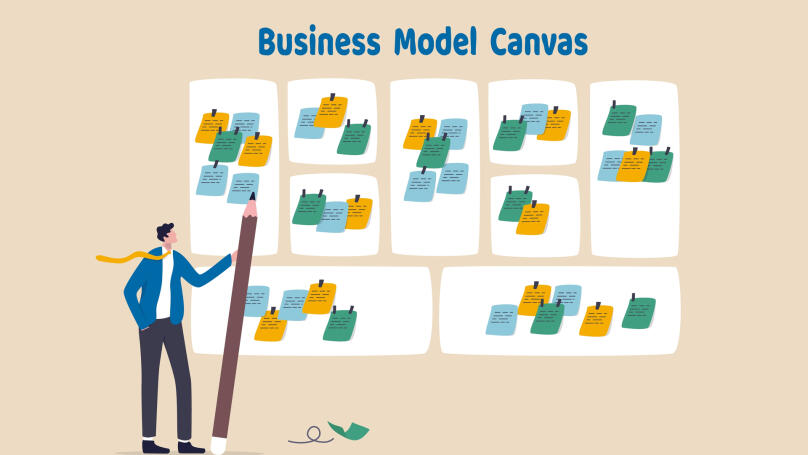
Lean Canvas model is the earlier generation BMC that it was based on. However, unlike Alexander Osterwalder's model, Lean Canvas is a narrower approach focused on finding and fixing a specific problem. Moreover, Lean Canvas involves working separately with each segment of the audience. That is, you develop a template for each segment. In addition, the filling of blocks also differs. For example, there is no "Key partnerships" block. Instead, Lean Canvas includes:
- Block #1. Consumer segments
- Block #2. Problem and potential solutions
- Block #3. Unique value
- Block #4. Solution to the problem
- Block #5. Promotion channels
- Block #6. Cost structure
- Block #7. Cash flows
- Block #8. Key metrics
- Block #9. Hidden advantage
Thus, BMC is a more extensive model that allows for the supervision and optimization of the entire business as a whole. You can use it not only to increase its profitability, but also to make it more sustainable to crises and market fluctuations.
Business model canvas examples
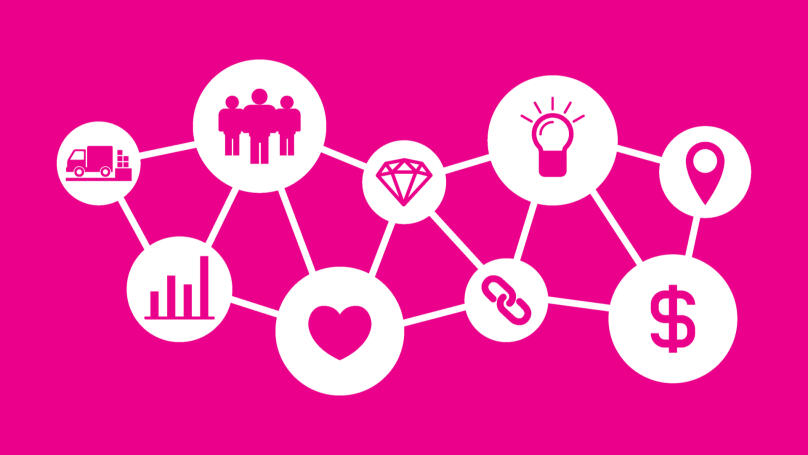
Let's take the model of the new generation popular streaming service Netflix as one of the examples of using the business model canvas. Note that the actual indicators and tools of the company may differ slightly at the moment - this is only an example for a visual demonstration of the use of the model in practice.
- Block #1. Key partners. Producers, TV companies, and electronic equipment suppliers.
- Block #2. Key activities. Production, translation and licensing of content, and development of the platform infrastructure.
- Block #3. Key resources. Netflix's website, accounts on social networks (Facebook, Instagram, TikTok, etc.), collection of TV series and movies, and a brand.
- Block #4. Value propositions. Free access to content on-demand, regardless of the timezone and location the client finds themselves in.
- Block #5. Customer relationships. The site builds customer relationships through a recommendation system that integrates artificial intelligence. It provides a unique selection of movies and TV shows for each user, compiled based on their past requests and interests.
- Block #6. Sales channels. Mobile and desktop devices, as well as the Netflix app and website.
- Block #7. Consumer segments. Film buffs, kids, and fans of certain series available only on Netflix.
- Block #8. Cost structure. Content production, purchase of content broadcasting rights, translation works, and technical support of the platform.
- Block #9. Revenue streams. Subscription to unlimited access to the platform's content. Another examples of BMC are companies such as Google, Starbucks, Tesla, and Uber.
You can make a model template in Microsoft Word and specially designed paid programs, such as Strategyzer. Word is suitable for people who only start learning Canvas or small startups that do not yet have complex systems and a large customer base. At the same time, Strategyzer is designed for professionals and large business representatives.























